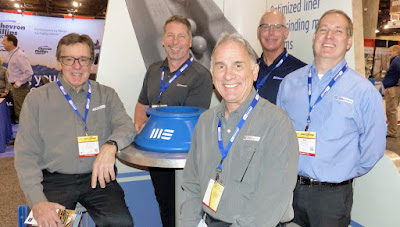I am pleased to announce that the recipient of MEI's Young Person's Award for 2020 is Dr. Ahmad Hassanzadeh, now an independent consultant in Germany. His glowing nominations come from Prof. Mehmet Sabri Çelik, of Harran University, Turkey, Dr. Tomasz Niedoba, of AGH University of Science and Technology, Poland, Prof. Nickolay Rulyov, of National Academy of Sciences of Ukraine, Prof. Safak Gökhan, of the Turkish-German University, Turkey and Prof. John Ralston, Emeritus Laureate Professor of the University of South Australia.

Dr. Ahmad Hassanzadeh was born in 1986 in Khoy, Iran. In 2004, he completed his high school degree and attended Sahand University of Technology from where he graduated with a BSc in Mining Engineering in 2010. After completing an MSc in Mining Eng. (Mineral Processing) at Shahid Bahonar University of Kerman he was granted two industrial projects in comminution, classification and flotation circuits at Sarcheshmeh Copper Complex, the largest copper beneficiation plant in Iran, from where he learnt much of all aspects of laboratory and industrial mineral processing.
Ahmad moved to Turkey in Sep. 2014 as a PhD student in the Mineral Processing Department of Istanbul Technical University under the supervision of Prof. Mehmet S. Celik. He researched the development of a functional material for use in water borne paints through the coating of calcite by TiO2. During this time he supervised several bachelor students’ projects and initiated several international joint projects between Iran, the UK, Turkey, Australia and Algeria.
Ahmad was awarded an Erasmus Exchange Program grant in 2016 and exchanged as a PhD candidate in the Department of Mineral Resources Engineering at the Montan University of Leoben, Austria. Later, in December 2018, he successfully defended his PhD thesis on the effect of hydrodynamic parameters on particle-bubble interactions in flotation and graduated from the Mineral Processing Department of Istanbul Technical University. He had five articles out of his thesis published in prestigious peer-reviewed journals, including two in Minerals Engineering and two in Colloids & Surfaces A.
During the last year of his doctorate program, Ahmad was selected by Helmholtz-Zentrum Dresden-Rossendorf, Germany as a post-doctoral research associate and worked two years (2018-2020) in the Processing Department of Helmholtz Institute Freiberg for Research and Technology.
Over the last 5 years, Ahmad has published 30 papers in high impact journals and 25 conference articles presented in Canada, Chile, UK, Iran, Serbia, Russia, Brazil, Germany, Greece, Turkey, and Albania, including an invited keynote lecture at the 2nd International Electronic Conference on Mineral Science this year. He was made an an editor of the Physicochemical Problems of Mineral Processing journal in 2020.
Ahmad is without doubt a very accomplished minerals engineer and his international links are impressive. Based in Germany for the past three years, he has developed joint projects with institutions in Poland, Germany, Iran and Turkey.
Ahmad is a very worthy winner of the MEI Award, and I look forward to presenting it to him some time in the near future when international travel once more becomes possible.
Congratulations from all of us at MEI.
@barrywills






























-EDIT.jpg)










